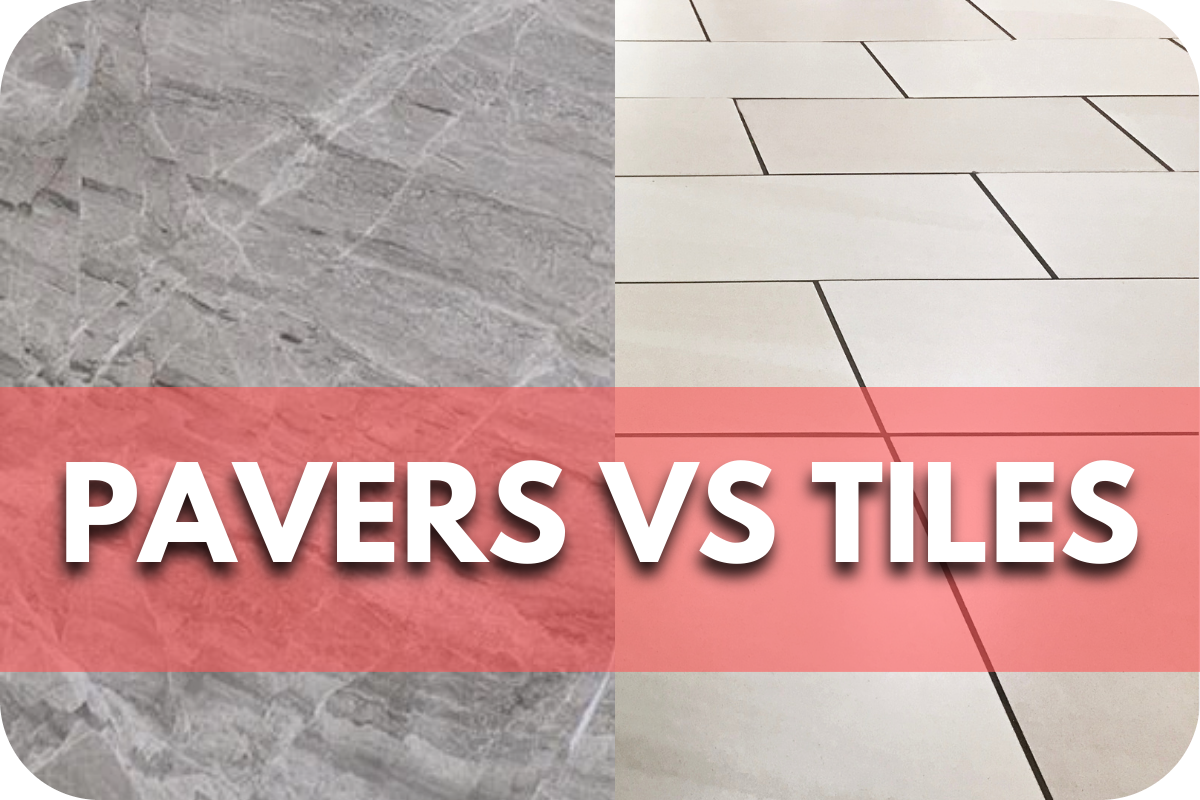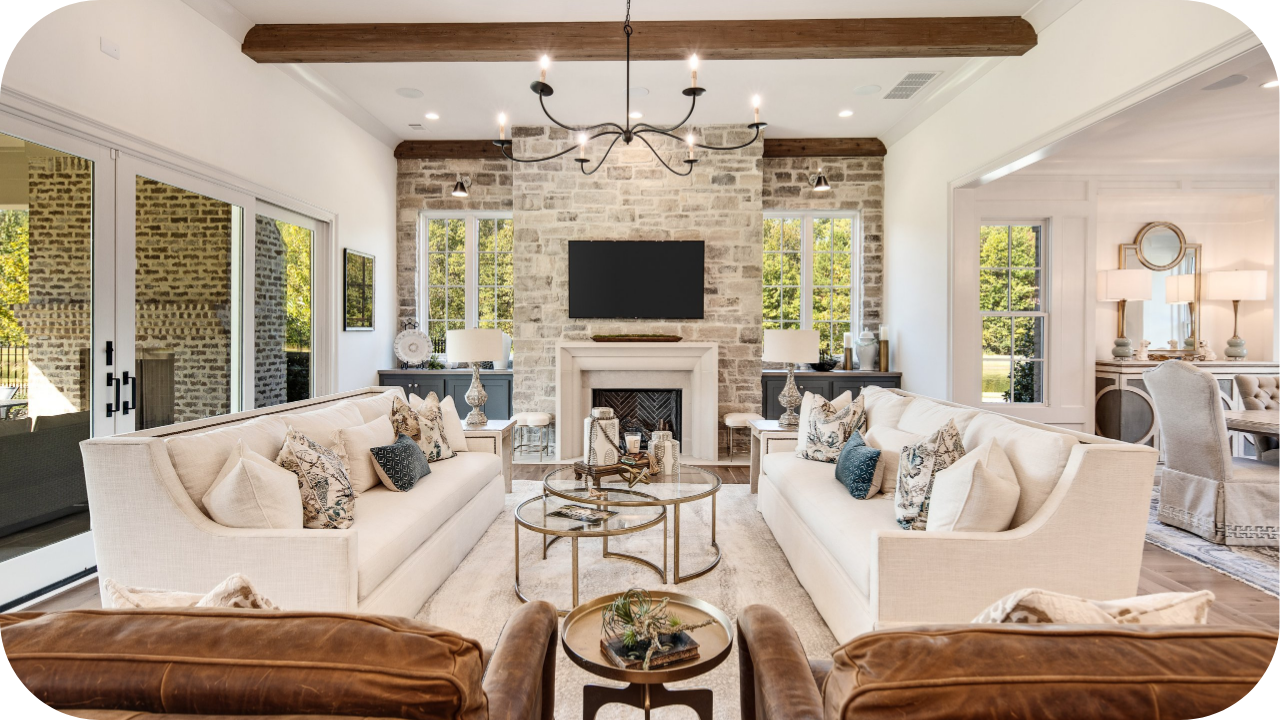
Choosing between pavers and tiles can be confusing with so many options available.
Making the wrong choice can lead to costly mistakes, maintenance headaches, and unsatisfactory results in your project.
To help you make the right decision, we explore the key differences between pavers and tiles and guide their best uses. Read on to discover which option suits your needs and ensures a successful outcome.
Definition and Composition
Pavers and tiles are distinct in composition and purpose, each tailored for specific applications in construction and landscaping. Typically made from concrete or natural stone such as granite, limestone, or porcelain, Pavers are designed to withstand heavy loads and outdoor weather conditions.
They are thicker and sturdier than tiles and crafted to support driveways, pathways, and outdoor patios with durability and resilience.
Conversely, tiles are thinner and primarily used indoors, though some varieties can be used outdoors in more sheltered areas. They are commonly made from ceramic, porcelain, or natural stone like marble or travertine.
Tiles offer versatility in design, catering to aesthetic preferences in flooring, bathrooms, and living spaces. Their thinner profile makes them easier to install and adapt to curved surfaces, unlike pavers, which are typically laid on a compacted base for stability and longevity.
Durability and Strength
When comparing pavers and tiles, durability and strength are critical considerations. Pavers, constructed from robust materials like concrete, natural stone, or porcelain, are engineered for outdoor resilience.
They withstand heavy foot traffic, vehicular loads on driveways, and varying weather conditions without compromising structural integrity. Their thickness and composition ensure longevity, making them ideal for enduring landscapes.
While durable, tiles are generally thinner and more suited for indoor applications. Ceramic, porcelain, and natural stone tiles offer varying degrees of durability. They are designed to withstand regular foot traffic and moisture in residential and commercial interiors.
However, outdoor use requires careful selection and is often limited to sheltered areas due to their thinner build and susceptibility to cracking under heavy loads or extreme weather.
Installation Process
The installation processes for pavers and tiles differ significantly, reflecting their distinct applications. Pavers require a solid foundation to ensure stability and longevity. The process begins with excavating the area and laying a geotextile fabric to prevent weed growth.
Next, a layer of compacted gravel is added, followed by a sand layer to create a smooth, even base. The pavers are then placed, ensuring tight joints and even spacing. Finally, the gaps between pavers are filled with jointing sand, and the entire surface is compacted to secure the pavers in place.
Tiles, often installed indoors, demand a different approach. The process starts with ensuring the subfloor is clean, dry, and level. A thin-set mortar is applied to the surface using a notched trowel, providing a bed for the tiles.
Tiles are then laid in the desired pattern, with spacers used to maintain uniform gaps for grout. Once the mortar sets, the gaps are filled with grout sealed to protect against moisture and stains.
Cost Comparison
Several factors come into play when considering the cost of pavers versus tiles. Pavers tend to be more expensive due to their thicker composition and durability, which makes them suitable for heavy-duty outdoor use.
The higher cost is also due to the materials commonly used for pavers, such as concrete, natural stone, and porcelain.
Additionally, the installation process for pavers is labour-intensive, requiring excavation, base preparation, and precise placement, which can significantly increase the overall expense.
Tiles, on the other hand, generally have a lower upfront cost. They are thinner and often made from ceramic or porcelain, which are less expensive materials.
The installation process for tiles is typically less complex, especially for indoor applications, leading to reduced labour costs. However, high-end materials like natural stone tiles can increase prices, especially if intricate patterns or custom designs are required.
While pavers may have a higher initial cost, their durability and low maintenance requirements can offer better long-term value for outdoor projects. Conversely, tiles provide a cost-effective solution for indoor spaces, with a wide range of design options to suit various budgets.
Aesthetic Appeal
The aesthetic appeal of pavers and tiles is crucial in their selection for various projects. Available in materials like concrete, natural stone, and porcelain, Pavers offer a rugged and timeless look that enhances outdoor spaces.
Their natural textures and earthy colours blend seamlessly with landscapes, creating inviting pathways, patios, and driveways.
The wide range of shapes and patterns available allows for creative designs, from classic herringbone to intricate mosaics, adding a touch of elegance and character to any outdoor setting.
Tiles, conversely, are celebrated for their versatility and refined appearance. Commonly made from ceramic, porcelain, and natural stone, tiles come in an extensive array of colours, finishes, and patterns, making them ideal for customising indoor spaces.
Whether a sleek, modern kitchen backsplash or a luxurious bathroom floor, tiles offer endless possibilities for achieving a specific aesthetic. Glossy finishes can reflect light to make spaces feel larger, while textured tiles add depth and interest.
Best Uses for Pavers
Pavers are exceptionally suited for various outdoor applications due to their durability and aesthetic versatility. One of the most common uses for pavers is in driveways.
Their robust nature allows them to withstand the weight of vehicles without cracking or shifting, making them ideal for this high-traffic area. Additionally, pavers are popular for creating patios and outdoor living spaces.
Their ability to endure the elements while maintaining their visual appeal makes them perfect for areas where people gather and relax.
Pavers also greatly benefit walkways and pathways. They provide a stable, non-slip surface that can be designed in various patterns and colours to complement the surrounding landscape.
Pavers are equally effective for pool decks, offering a slip-resistant and heat-resistant surface that ensures safety and comfort around water features.
For garden edging and landscape borders, pavers provide a clean, defined edge that helps to keep grass and plants neatly contained.
Best Uses for Tiles
Tiles excel in indoor applications, offering versatility and aesthetic appeal for various settings. One of the most popular uses for tiles is in kitchen countertops. Their resistance to moisture and ease of cleaning make them ideal for food preparation areas, while their diverse designs can enhance the kitchen’s visual appeal.
Bathroom walls and floors are another prime area where tiles shine. Their water-resistant properties and hygienic surface make them perfect for wet environments, ensuring practicality and style.
Tiles are also widely used in living areas, where they can create stunning accent walls or elegant flooring. Their durability ensures they can handle high foot traffic while maintaining their look.
In commercial settings, tiles are often used for office lobbies and retail spaces. Their durability and ease of maintenance make them practical choices for areas that experience heavy use. Additionally, tiles can be used outdoors in covered patios or balconies, provided they are rated for exterior use.
Maintenance and Longevity
The maintenance and longevity of pavers and tiles are crucial in their selection and use. Made from durable materials such as concrete, natural stone, and porcelain, Pavers generally require minimal maintenance.
Regular sweeping and occasional washing with a mild detergent keeps them looking pristine. However, periodic re-sanding and sealing are recommended to prevent weeds and moss growth in joints. Properly installed pavers can last decades, withstanding harsh weather and heavy traffic without significant wear.
Tiles, particularly those used indoors, are also relatively low-maintenance. Ceramic and porcelain tiles are resistant to stains and easy to clean with simple sweeping and mopping.
Natural stone tiles may require sealing to protect against stains and moisture. While tiles are durable, their longevity can be compromised if they are not installed correctly or if they are subject to heavy impact, which can cause cracking or chipping.
Proper care, including using appropriate cleaning products and maintaining grout lines, ensures that tiles remain in excellent condition for many years.
Conclusion
Choosing between pavers and tiles involves considering various factors, including their definitions, composition, durability, installation processes, costs, aesthetic appeal, best uses, and maintenance requirements.
By understanding these differences and how each material can be used effectively, you can make an informed decision that enhances the beauty and functionality of your space.
More To Explore

Stone Accents: Adding Charm to Modern Interiors with Natural Stone
Modern interiors seek a balance of style, durability, and uniqueness. Natural stone accents are a game-changer, adding timeless elegance and character to any space. As

Natural Stone Features That Will Transform Your Living Room
Natural stone elevates any living room with elegance, texture, and timeless appeal. Its versatility allows it to enhance both modern and traditional spaces. From stone


